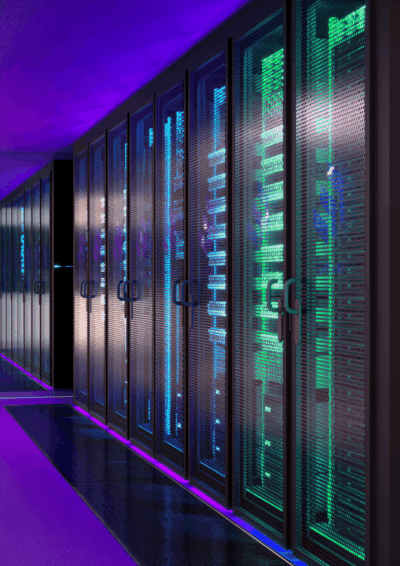Cybersecurity Challenges in Remote Work Environments
The New Normal: Why Remote Work Demands Stronger Cybersecurity
The widespread shift to remote and hybrid work has reshaped the way businesses operate — and the way cybercriminals target them. Employees are no longer logging in from behind a central office firewall but from home networks, public Wi-Fi, and personal devices. This decentralization creates new security challenges, expanding the attack surface and complicating how organizations maintain visibility and control.
While remote work has brought flexibility and productivity gains, it has also introduced new vulnerabilities that demand proactive, adaptive cybersecurity strategies.
The Fragmented Perimeter: A Rising Risk
In the past, organizations could protect a single, well-defined network perimeter. Today, that perimeter has dissolved. Each remote device, router, and cloud platform becomes its own potential entry point for cyber threats.
Threat actors are increasingly exploiting:
-
Unsecured home networks
-
Personal devices lacking proper configuration
-
Remote desktop protocol (RDP) vulnerabilities
-
Weak access controls and authentication
-
Poor visibility into offsite user activity
Without updated defenses, businesses leave themselves open to ransomware, phishing, credential theft, and data exfiltration — all amplified by the distributed nature of remote work.
Key Cybersecurity Challenges in Remote Environments
1. Securing Endpoints Across Locations
Laptops, smartphones, and tablets used remotely may not be consistently patched or monitored. Endpoint security must extend protection beyond the corporate office.
2. Managing Network Access
Employees access sensitive data through varied internet connections. Without strict network access controls, attackers can infiltrate through weak points.
3. Visibility and Monitoring
Limited visibility into remote activity can delay threat detection. Real-time monitoring and logging are critical to catch anomalies before damage is done.
4. Employee Awareness
Phishing emails and social engineering tactics are more effective when employees feel isolated. Security awareness training is essential to create a human firewall.
5. Data Protection and Compliance
Sensitive data accessed offsite must still meet regulatory standards. Organizations must ensure that data is encrypted, backed up, and protected — no matter where it’s being accessed.
Best Practices for Remote Work Cybersecurity
To navigate the security challenges of remote work, organizations should implement:
-
Endpoint protection and mobile device management (MDM)
-
Multi-factor authentication (MFA) for all accounts
-
VPN or Zero Trust Network Access (ZTNA) solutions
-
Cloud-based threat detection and SIEM integration
-
Regular employee training on phishing and safe practices
-
Access control policies based on least privilege
-
Routine patching and vulnerability scans
-
Secure backup and disaster recovery planning
Did You Know? According to multiple cybersecurity studies, over 60% of data breaches now involve remote or hybrid work vulnerabilities — highlighting the urgent need for adaptive security strategies.
Building Cyber Resilience in a Decentralized World
The move to remote work isn’t temporary — it’s a long-term shift. Organizations that treat cybersecurity as a static, perimeter-bound function will struggle to defend against the fluid, persistent threats of today.
A resilient cybersecurity strategy must:
-
Adapt to users and assets that are constantly on the move
-
Embrace real-time monitoring and response
-
Prioritize employee education and engagement
-
Integrate cloud-native and identity-aware technologies
The Bottom Line
Remote work offers opportunity — but only if it’s built on a secure foundation. Cybersecurity strategies must evolve alongside workforce models to protect business continuity, customer trust, and regulatory compliance.
A Note from Alvaka
At Alvaka, we understand the cybersecurity complexities introduced by remote work. As part of our broader commitment to cyber resilience, we help organizations enhance their security posture through monitoring, incident response, and proactive threat defense.
To learn more about how Alvaka supports modern businesses in a remote-first world, visit alvaka.net.
FAQ
Why has remote work security become a critical concern for organizations? ▼
In recent years, the shift towards remote work has accelerated significantly due to global events, leading to challenges in cybersecurity. Since employees are now accessing corporate networks from various, often less secure locations, traditional perimeter-based security models don’t suffice. This situation demands a focus on remote work security to protect sensitive data and maintain business continuity.
What are the main cybersecurity threats associated with remote work? ▼
The main threats include phishing attacks, unsecure Wi-Fi networks, use of personal devices that aren’t properly secured, and insufficient access controls. Additionally, the lack of physical oversight in remote environments can lead to increased risk of data loss or unauthorized access.
How can organizations improve cybersecurity in a remote work setting? ▼
Improving cybersecurity involves implementing multi-factor authentication, ensuring secure connections through VPNs, conducting regular security training for employees, and deploying end-point protection solutions. Strong IT management also plays a crucial role in ensuring consistent application of security policies.
What role does employee awareness play in remote work security? ▼
Employee awareness is fundamental; even the best technical safeguards can be compromised through human error. Regular training and clear communication on best practices and security policies can significantly mitigate risks posed by phishing and other social engineering tactics.
Can using personal devices for work increase cybersecurity risks? ▼
Absolutely, personal devices often lack the strict security measures found in corporate-issued hardware. Ensuring these devices are equipped with proper security software and that they comply with the company’s security policies is essential to maintain a strong security posture.
How does VPN improve remote work security? ▼
A Virtual Private Network (VPN) creates a secure and encrypted connection over the internet, enabling remote employees to access corporate networks safely. This shields sensitive data from potential interception in unsecured networks, such as public Wi-Fi.
Why is multi-factor authentication important for remote workers?▼
Multi-factor authentication adds an additional layer of security by requiring two or more verification factors to access corporate resources, which significantly reduces the chances of unauthorized access resulting from compromised credentials.
What is the impact of weak passwords on remote work security? ▼
Weak passwords can be easily breached by cybercriminals, granting them access to corporate networks and sensitive data. Encouraging strong, unique passwords, possibly through the use of a password manager, is crucial to prevent such breaches.
How often should remote work security policies be updated? ▼
Security policies should be reviewed and updated regularly, at least annually or whenever there are significant changes in technology or business operations. Staying abreast of emerging threats and updating policies accordingly is vital for effective security.
What steps should be taken if a security breach occurs in a remote work environment? ▼
Immediate actions include isolating affected systems, revoking compromised credentials, and initiating a thorough investigation. Promptly notifying relevant stakeholders and following a predefined incident response plan can help mitigate damage and prevent future breaches.








 You want to enter in a fully burdened labor rate for this field. What that means is that you want to take the base hourly rate, plus 25-30% for employer payroll taxes, benefits, vacation/holiday time, etc.
You want to enter in a fully burdened labor rate for this field. What that means is that you want to take the base hourly rate, plus 25-30% for employer payroll taxes, benefits, vacation/holiday time, etc.
 Smoke testing is a type of software testing performed by Alvaka after a software patching sequence to ensure that the system is working correctly and to identify any misconfigurations or conflicts within the patched system.
Smoke testing is a type of software testing performed by Alvaka after a software patching sequence to ensure that the system is working correctly and to identify any misconfigurations or conflicts within the patched system. This is a basic cost calculator for you to compute your typical monthly cost for patching your servers, PCs, laptops, tablets and associated application software. It also forms the basis for you to begin calculating your Return on Investment for software patching, or for comparison with alternatives to the manual process of patching operating systems and application software—such as Patch Management as a Service, also known as Vulnerability Management as a Service.
This is a basic cost calculator for you to compute your typical monthly cost for patching your servers, PCs, laptops, tablets and associated application software. It also forms the basis for you to begin calculating your Return on Investment for software patching, or for comparison with alternatives to the manual process of patching operating systems and application software—such as Patch Management as a Service, also known as Vulnerability Management as a Service. Smoke testing is a term used to describe the testing process for servers after patches are applied.
Smoke testing is a term used to describe the testing process for servers after patches are applied.